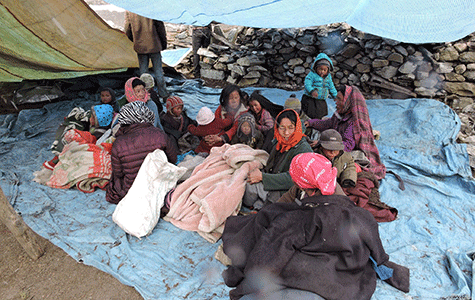
The devastating earthquake in Nepal has forced three Washington University in St. Louis researchers to alter their plans for research-related projects in the country — one who was working in Kathmandu when the quake hit and two who had planned to fly there a few days later.
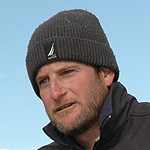
“I was tempted to go anyway,” said Geoff Childs, PhD, associate professor of anthropology in Arts & Sciences. “I’ve been working in Nepal for 20 years, and some of my best friends in the world are there now trying to deal with this crisis.
“I’d love to be there for them, but right now, the last thing they need is another foreigner to house, another mouth to feed.”
Childs and colleague E.A. Quinn, PhD, assistant professor of anthropology, were scheduled to fly to Nepal at the end of April to begin five weeks of field research for phase two of a National Science Foundation-funded study of how life at high altitudes influences infant health and development, with a special focus on the role of breastfeeding in health outcomes.
Shanta Pandey, PhD, professor at the Brown School and a native of Nepal, was in Kathmandu on April 25 when the initial quake hit with a magnitude of 7.8 on the Richter Scale, followed by more than 100 significant after-shocks.
“The ground shook, everyone screamed, and houses (and temples) turned into rubble within seconds,” Pandey said. “Survivors ran to the closest open space and held on to each other. The aftershocks were frequent during the next few days and the rain did not help.”
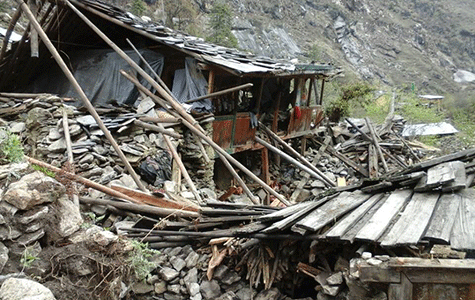
Pandey was in Nepal to make a conference presentation on ways to engage the community to empower women and girls in Nepal. She boarded a flight for home five days later.
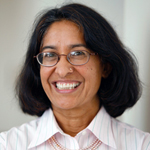
Pandey’s research examines the role of women’s empowerment on the health and economic well-being of women in Nepal, including programs designed to improve education, child vaccinations and maternal care. She and her husband, Gautam Yadama, PhD, professor at the Brown School and assistant vice chancellor for international affairs-India, also have studied the use of improved smokeless stoves by rural women in Nepal.
Yadama was a Fulbright Scholar in Nepal in 2000-01, where he conducted field research on collective action to provide and maintain public goods in traditional neighborhoods (Tols) of Kathmandu. He was one of the key architects of the 2001 Nepal Human Development Report for the United Nations Development Program.
“The neighborhood committees that were the focus of my Fulbright studies are now active in the quake relief efforts in Kathmandu,” Yadama said.
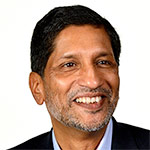
Pandey said the death toll from the quake could have been much higher if it had come during the evening, when more residents would have been in their now-collapsed homes and buildings. Even so, the United Nations estimates that 8 million Nepalese are affected, including about 2 million women and girls of reproductive age and 126,000 pregnant women.
“There are dead people and livestock under the rubbles and the monsoon is about to begin,” Pandey said. “The risk of disease outbreak has increased. Survivors have become homeless and need basic supplies immediately: clean water, food, medicine, warm clothes, soap.”
The best way to help, Pandey and Yadama suggest, is to support strong non-governmental organizations with disaster-response experience and staff on the ground in Nepal.
They mention the United Nation’s Population Fund (UNFPA), which distributes survival kits to help women of reproductive age with necessities during disasters, and the American Nepal Medical Foundation, which began providing on-the-ground care to Nepalese victims within hours of the quake.
Childs also has been active in coordinating relief efforts since the quake, including work with Nepal Seeds, a nonprofit group that he co-founded years ago. Communication with friends in Nepal has been challenging since the quake, but Childs has been able to help locate tents and other emergency supplies and get them sent to survivors in remote villages.
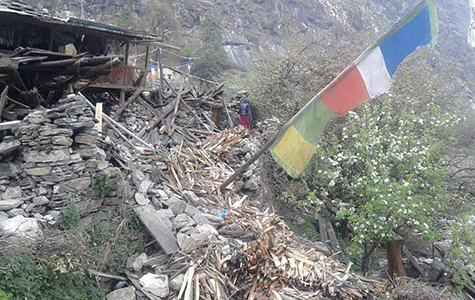
In one valley, the only working phone is in the home of a man who lives along a river just downstream from an area where earthquake debris has formed a natural dam, forcing the river to back up into a rapidly growing lake. Fearing that the dam will break and unleash massive flooding, the man has been sleeping in the mountains and only returns to the home to use the phone for short periods, Childs said.
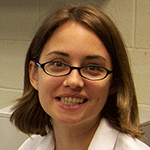
The Nubri region, where Childs and Quinn conduct their research, is about 30 miles from the quake’s epicenter. While the area suffered extensive damage to homes, roads and bridges, reports suggest that only four lives were lost, Childs said. The situation is still dire, he adds, noting that many residents are sheltering in makeshift tents as food supplies remain buried and out of reach.
Quinn and Childs visited Nepal in 2013 to conduct phase one of the “Milk With Altitude” study, which focused on 67 lactating women from six villages in the Nubri region. Quinn, Childs and colleagues collected milk samples, measurements of mothers and children, and basic information on health and child care practices. The samples were analyzed for macronutrients, immune factors and hormones at Washington University.
“Our research investigates associations between adaptation to a high altitude environment, mother’s milk and infant growth,” Quinn said. “One of the major findings from the first phase of the study was the high rate of stunting among children. By age 2, all children in the study sample were stunted.”
Quinn and Childs had planned to return to Nubri for a five-week follow-up project designed to investigate growth, stunting and wasting among children living in the Nubri Valley and those who have migrated elsewhere.
This “Growing up with Altitude” phase of the project has now been postponed until November 2015, Quinn said.